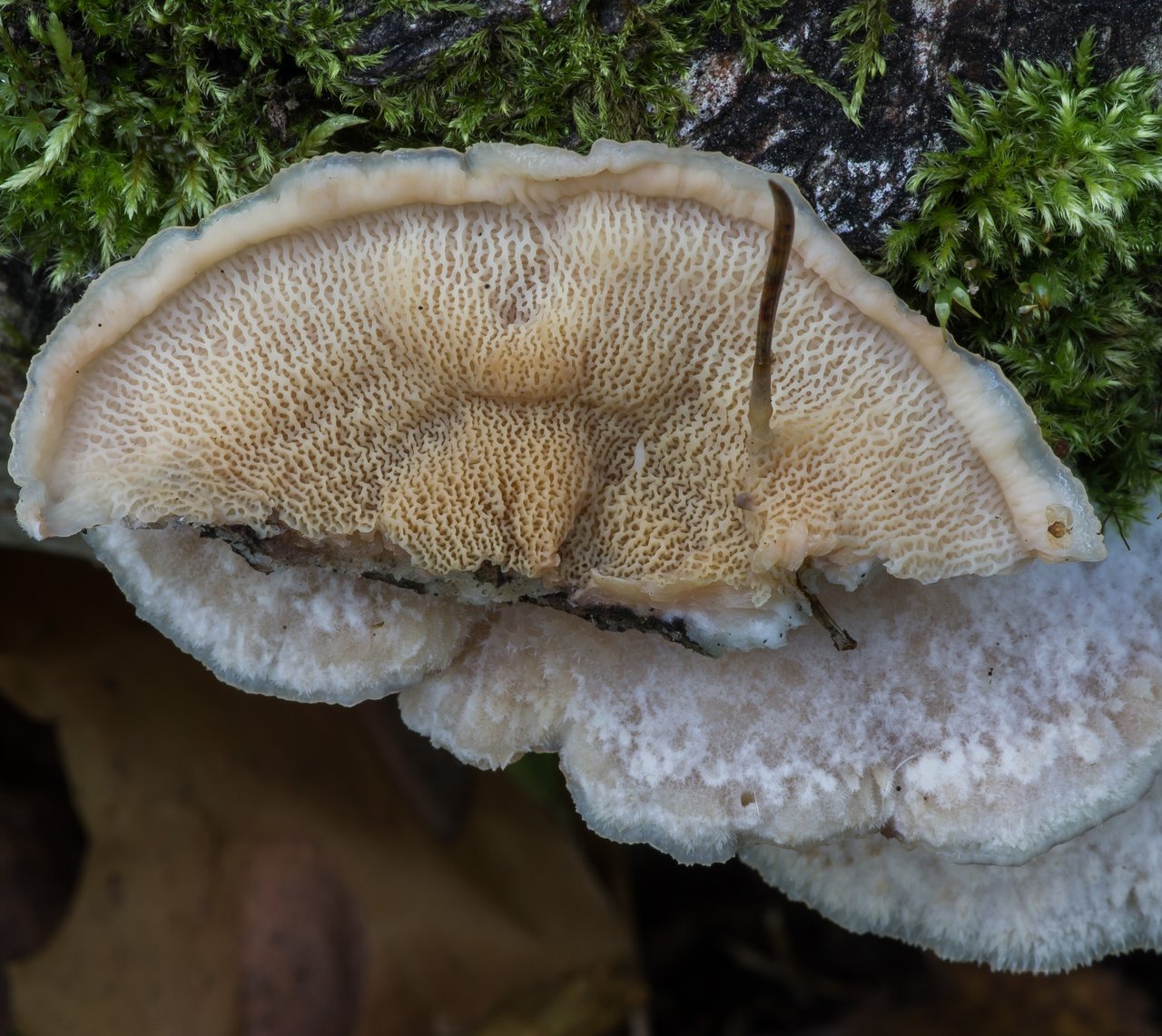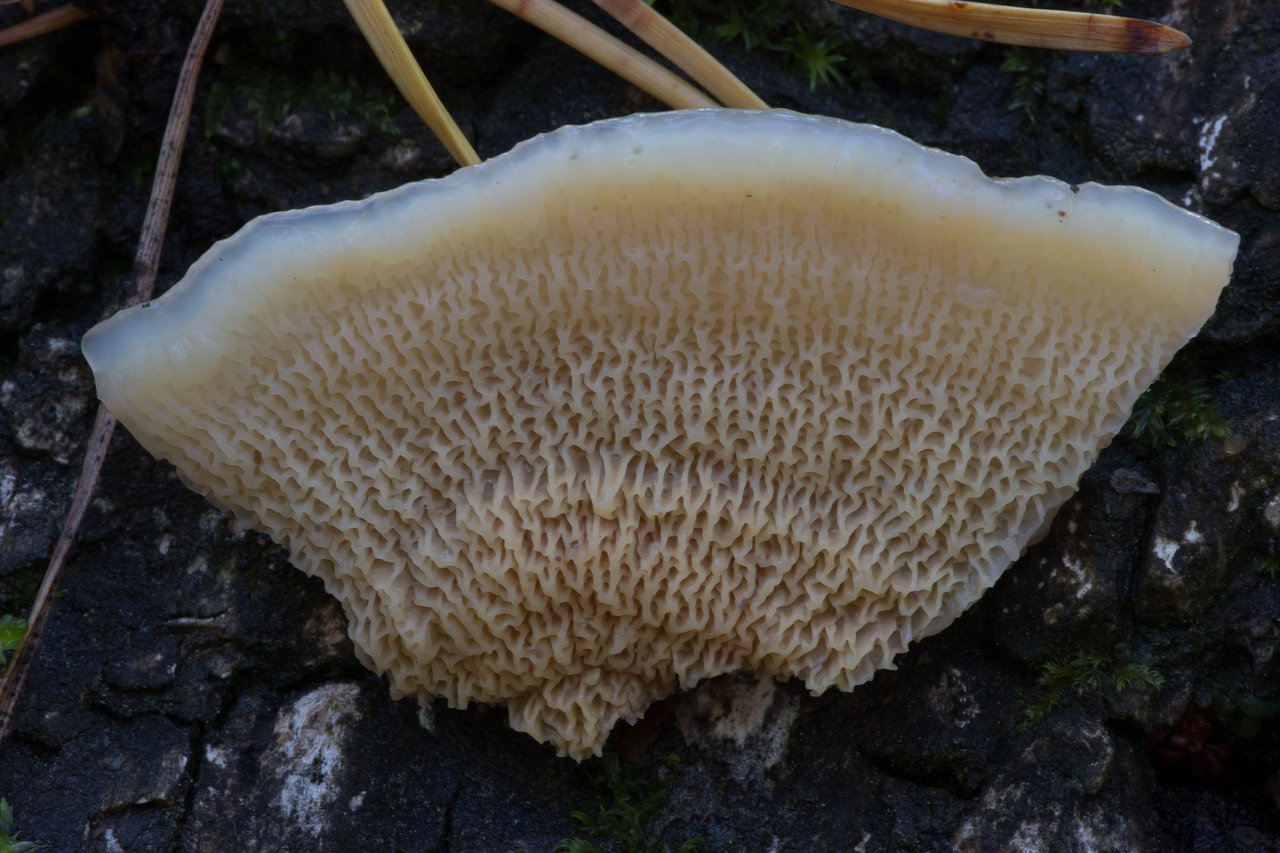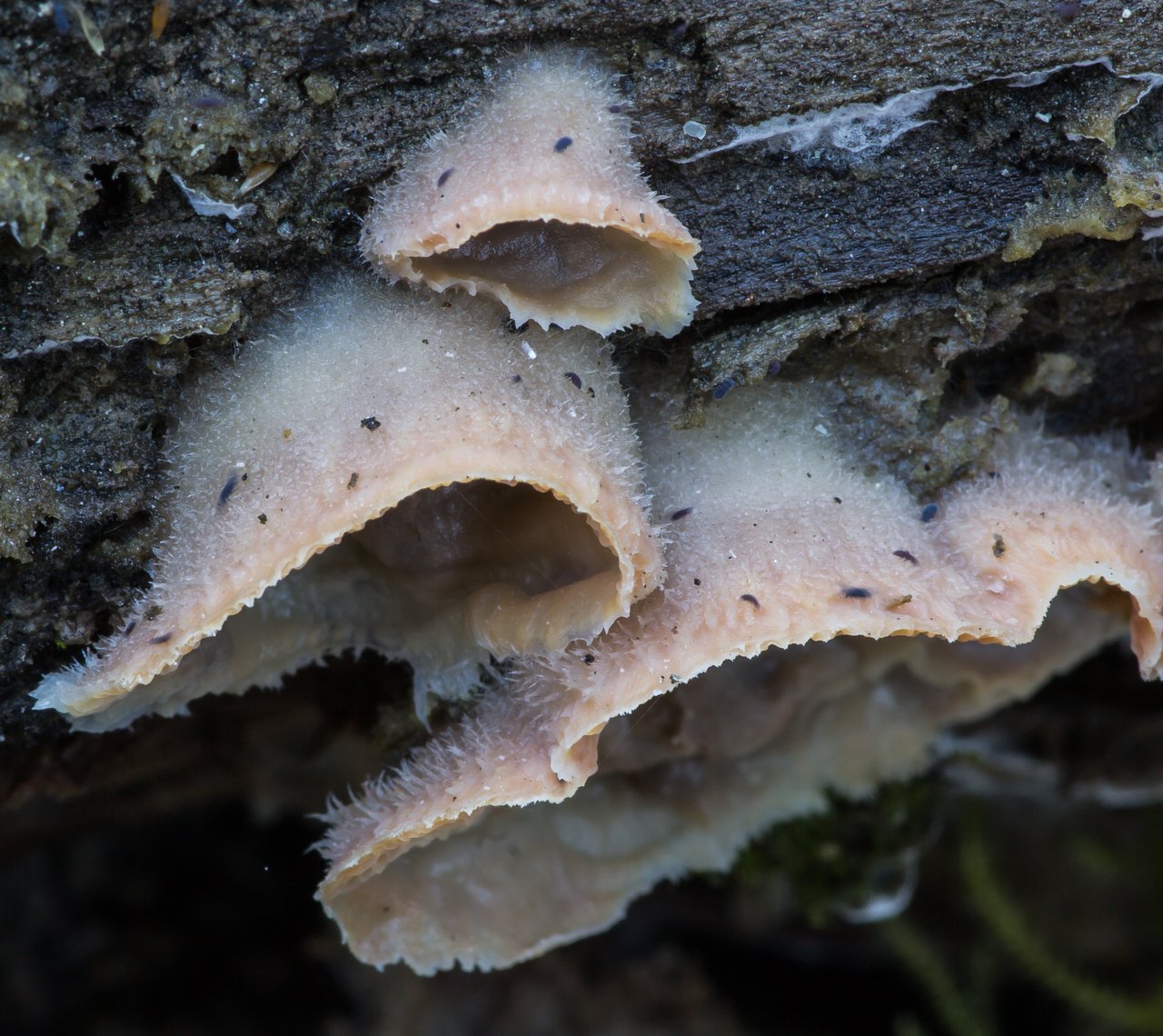Trembling Phlebia (Phlebia tremellosa)
- Vaega: Basidiomycota (Basidiomycetes)
- Vaevaega: Agaricomycotina (Agaricomycetes)
- Vasega: Agaricomycetes (Agaricomycetes)
- Vasega laiti: Incertae sedis (o le tulaga le mautinoa)
- Poloaiga: Polyporales (Polypore)
- Aiga: Meruliaceae (Meruliaceae)
- Genus: Phlebia (Phlebia)
- ituaiga: Phlebia tremellosa (Phlebia trembling)
- Merulius trembling
:
- Agaricus betulinus
- Xylomyzon tremellosum
- Trembling sesia
- Tree mushroom

Name history:
Originally named Merulius tremellosus (Merulius trembling) Schrad. (Heinrich Adolf Schrader, German Heinrich Adolf Schrader), Spicilegium Florae Germanicae: 139 (1794)
In 1984 Nakasone and Burdsall transferred Merulius tremellosus to the genus Phlebia with the name Phlebia tremellosa based on morphology and growth studies. More recently, in 2002, Moncalvo et al. confirmed that Phlebia tremellosa belongs to the genus Phlebia based on DNA testing.
Thus the current name is: Phlebia tremellosa (Schrad.) Nakasone & Burds., Mycotaxon 21:245 (1984)
This bizarre mushroom is widely distributed in different continents. It can be found on dead wood of hardwoods or sometimes softwoods. The typical form of Phlebia trembling is a classic example of what mycologists call an “effused-reflexed” fruiting body: the spore-bearing surface extends over the wood, and only a small amount of pulp appears in the form of a slightly expanded and folded top edge.
Other distinguishing features include a translucent, orange-pinkish spore-bearing surface that shows prominent deep folds and pockets, and a whitish, pubescent upper margin.
Tino fua: 3-10 cm in diameter and up to 5 mm thick, irregular in shape, prostrate on the substrate with hymenium on the surface, except for a slight upper “influx”.
Top rolled edge pubescent, whitish or with a white coating. Under the coating, the color is beige, pinkish, maybe with a yellowish tinge. As the trembling Phlebia grows, its upper, turned away edge acquires a slightly sinuous shape, and zoning may appear in the color.

bottom surface: translucent, often somewhat gelatinous, orange to orange-pink or orange-red, to brownish in age, often with pronounced zonation – almost white towards the edge. Covered with a complex wrinkled pattern, creating the illusion of irregular porosity. Phlebia trembling changes greatly with age, this is especially evident in how the hymenophore changes. In young specimens, these are small wrinkles, folds, which then deepen, acquiring an increasingly bizarre appearance, resembling a complex labyrinth.
vae: misi.
Myakotb: whitish, very thin, elastic, slightly gelatinous.
Sogisogi ma tofo: Leai se tofo faapitoa po o se manogi.
spore pauta: Lanu paʻepaʻe.
Feeseeseaiga: 3,5-4,5 x 1-2 microns, smooth, flowing, non-amyloid, sausage-like, with two drops of oil.

Saprophyte on dead wood of deciduous (prefers broad-leaved) and, rarely, coniferous species. Fruiting bodies solitary (rarely) or in small groups, can coalesce into fairly large clusters. They cause white rot.
From the second half of spring until frost. Fruiting bodies are annuals, can grow on the same trunk every year until the substrate is depleted.
Phlebia trembling is widespread on almost all continents.
Unknown. The mushroom is apparently not poisonous, but is considered inedible.
Ata: Alesana.









